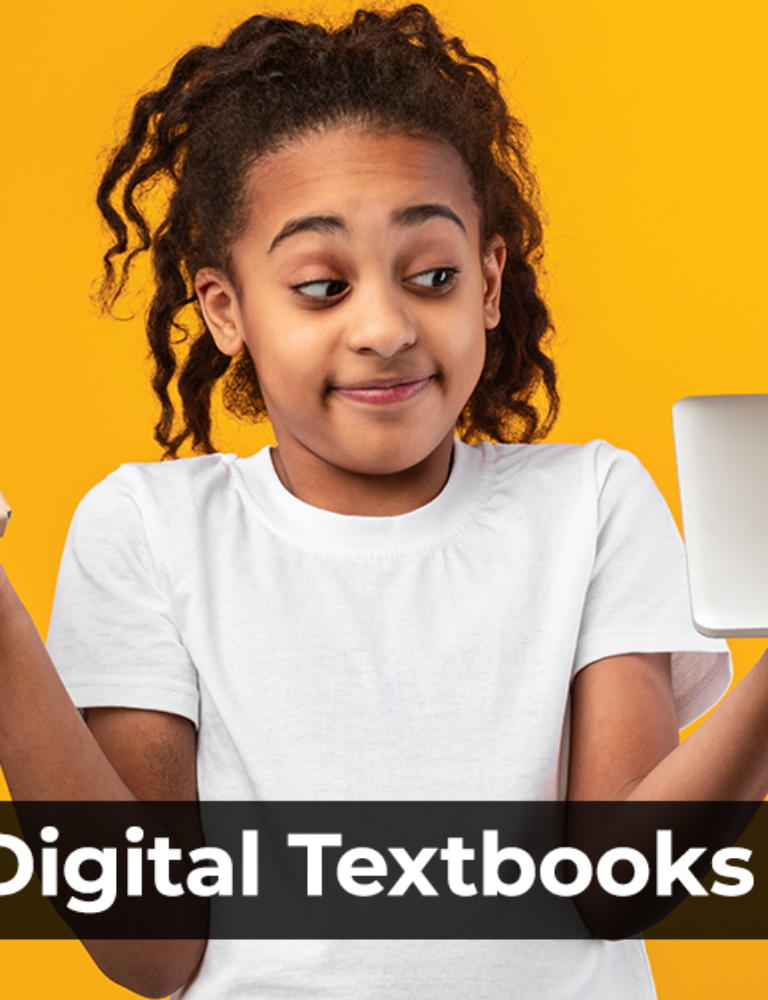As digital technology expands its reach, more and more educational institutions including schools and colleges are adopting etextbooks to impart knowledge. Publishers too are taking to etextbooks to meet learners’ expectations and expand their reach through the Internet.
The increasing use of the Internet and the easy availability of smartphones have changed the way people search for, access, and consume content. The other major change is in the way that the content is presented.
What is the Need for eTextbooks?
eTextbooks help to break the monotonous learning experience and make content more immersive, absorbing students into the lesson and challenging them to find solutions rather than simply receiving information, which is usually the case with print textbooks. Publishers, on the other hand, can benefit by leveraging the digital space to enter new markets.
There are several other reasons why etextbooks are becoming increasingly popular both with the students and educational institutions. So, are eTextbooks the next big thing in K-12 education?
Whitepaper:
Can the Education Publishers Leverage A Subscription Model
How Can eTextbooks Help K-12 Publishers
1. Lower Cost of Operations
Printing and reprinting paperback textbooks is indeed an expensive option. In the case of etextbooks, you just need to create a single soft copy that can be shared and downloaded by the end-users. Publishers also save in terms of inventory costs, warehousing costs, and transportation costs. etextbooks cost about 50-60% less than their printed counterparts.
2. Expanded Geographical Reach
With etextbooks, publishers can expand their geographical reach and target global markets as well. Students from all over the world can easily download etextbooks with just a few clicks and access the desired information. Also, by using localization services they can translate their etextbooks in several regional languages, further increasing their reach.
3. Speed of Delivery
One of the major benefits of etextbooks for publishers is the hassle-free shipping and delivery. Traditionally, textbook delivery was a flustering process where publishers had to look after storage and logistics including transport and safe delivery. On the other hand, etextbooks can be downloaded immediately as soon as they are ordered. It is no longer necessary to wait for the physical delivery of the textbooks.
4. Easy to Edit and Publish
It is quite easy to edit the etextbooks. You can add, delete, upgrade content as per your requirements, avoiding additional charges required for printing the edited textbooks. You can edit and publish the etextbooks with the latest version in a short time and at absolutely no additional costs.
5. Higher Revenues
Publishers save on inventory storage and transportation costs. As etextbooks don’t require reprinting, they become a cost-effective option, therefore, contributing to higher revenues. Besides, using the Internet and online payment options, publishers can make their etextbooks available for sale at no additional cost.
6. Environment Friendly
Although their production requires resources, etextbooks are kinder to the environment than printed textbooks. eTextbooks directly cut down on the amount of paper that would be used for physical textbooks. As a result, fewer trees are cut down.
How Can eTextbooks Help K-12 Students
1. Immersive Learning & Higher Retention
Interactive technologies like AR and VR can make learning fun, experiential and impactful. AR-enabled etextbooks use simulated environments to make lessons closer to reality. This results in higher retention levels. Besides, external and internal links are added to the content, allowing students to search for additional information either to clarify their doubts or learn more about the subject.
2. Ownership of Learning
eTextbooks enable K-12 institutes to take learning outside the walls of the traditional classroom and ensure a balance of responsibility between the teacher and students in the learning journey. With printed textbooks, students depend upon the instructor to understand the lesson while etextbooks let them learn on their own. They are a means to enable students to take greater ownership of their learning.
3. Self-paced Learning
The traditional teaching methods didn’t necessarily consider every individual’s needs all the time. Not all students in a class have the same ability to grasp and retain which means that while some surge ahead, others lag behind.
With etextbooks students can learn at their own pace, try their hand at various activities, and so they know what they are learning, why they are learning, and how they can leverage this learning in real-world settings. Here’s more on how to use digital textbooks in the classroom.
4. Better Assessment Solutions
It is generally observed that students are not too happy with homework and traditional assessment methods. AR-enabled worksheets are a means to evoke interest and motivate students to learn by doing. Through assessment solutions, etextbooks help students analyze their progress and understand their progress in meeting their learning objectives.
5. Discussion with Wider Audience
Publishers can further enrich their etextbooks by adding social media features, thus opening windows for conversations with a wider audience. The students can debate, discuss, share knowledge, and exchange views, and this leads to a greater interest and deeper connection with the subject. Students and teachers can also use these platforms to connect beyond the classroom and share notes and feedback.
6. Affordability & Storage
eTextbooks are available at a much cheaper price than print textbooks, making them more affordable. Some publishers also offer etextbooks on a rental subscription basis which makes them all the more affordable for students.
Students can store and access a whole library of etextbooks on their tablets or smartphones and don’t have to carry around heavy bags with print books.
How Can eTextbooks Help K-12 Institutions
1. Access Online Teaching Aids
eTextbooks also empower K-12 institutes at various levels. For one, instructors are relieved from the task of creating their own teaching resources since they can access a wealth of teaching aids on the Internet. Therefore, they have more time at hand for constructive interaction with the students.
2. Blended Learning Approach
The institutes can take a blended approach to learning. A blended approach is a combination of traditional learning and online learning. While online resources allow students to learn at their own pace and revisit concepts until they master them, the traditional approach provides them the opportunity to interact and engage with their instructor and peers. Needless to say, etextbooks are crucial to online education and therefore support blended learning. Can technology in the classroom replace expensive textbooks?
3. Foster Remote Learning
K-12 schools and higher institutions are now using digital technology to provide distant or remote learning to students who cannot be physically present in school. These courses can be instructor-led or web-based courses and are delivered using etextbooks, other online resources, and communication technologies that allow for large-scale interactive participation. These courses open up an additional source of revenue for these institutes, allowing them to reach a worldwide audience.
4. Quick Curriculum Updates
For academic excellence and the overall growth of students, it is important to keep them updated with the latest developments and innovations. With our fast-changing world, curricula can become obsolete and therefore need to be constantly updated. eTextbooks make it pretty simple to update curriculums and deliver fresh learning content to students.
5. Effective Monitoring of Learning Progress
Educators can closely monitor the learning behavior of students and analyze what is working best for them. This can help them to design their curriculum to be more effective and immersive. Tracking an individual’s learning progress can help instructors understand every student’s unique needs. This makes it easy to integrate additional learning resources into the existing course.
In Conclusion
With the world entering the digital era, technological literacy becomes important. Embracing the digitization of traditional study materials is the key to become tech-savvy. Today, students are learning new ways to learn with the help of pocket-sized technology and etextbooks.
The use of etextbooks is witnessing rapid growth in the education sector. Publishers are making a conscious effort to develop etextbooks and provide students with features that are not available with printed textbooks. Print textbooks definitely have a traditional value to it, but etextbooks have the potential to completely transform the learning experience for students.
DISCOVER HOW AN INTERACTIVE EBOOK PUBLISHING & DELIVERY PLATFORM CAN HELP YOU
Kitaboo is a cloud-based content platform to create-publish & distribute interactive mobile-ready ebooks.
You May Also Like







